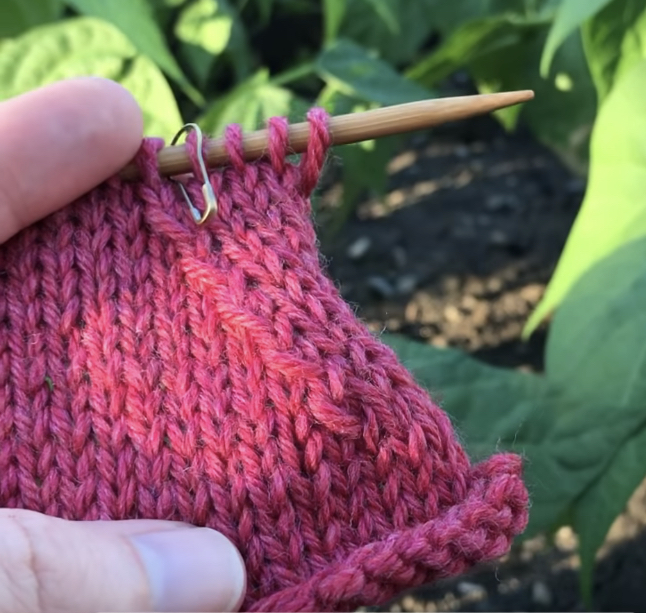If you’re starting to feel confident in your even width knitting and you’re ready to start learning types of knitting decreases, this article walks through two easy knitting decrease techniques that will help get you start.
K2tog – Knit Two Together
Knit Two Together (K2tog) is a great way to start practicing knitting decreases. It’s easy to learn, and builds directly on the foundational knit stitch. If you can work a knit stitch, you can work K2tog.
K2tog creates a right-learning decrease. That means that when you look at your knitting after working K2tog, you’ll see that the K2tog creates a stitch that slants to the right. If you work K2tog at the same point in the knitting over several rows, you’ll also see that the stitches to the left of the K2tog all lean over to the right.
I use K2tog in lots of places in my designs, for example to create shaping in tops or shawls. I also sometimes use it in combination with an increase, to create angled detailing, such as in the Cedar Shake Cushion Covers.
So, how do we do it? Here’s a quick video tutorial.
Ssk – Slip, Slip, Knit
Slip, Slip, Knit (Ssk) creates a similar look to K2tog, but with a left-leaning knitting decrease. This means that each individual Ssk creates an angled stitch that leans to the left, and that if you line them up over several rows, the stitches to the right of the Ssk will all lean to the left.
Ssk involves a couple more steps than K2tog, but is really straightforward once you get the hang of it. Check out this video tutorial to see how it’s done.
Both K2tog and Ssk decrease one stitch each time you work them. You can create any number of decreases you want by working multiples of either of these stitches.
Ready to practice? Check out beginner projects In Flight Scarf and Equilibrium Shawl and intermediate projects Cedar Shake Cushion Covers and Cityscape Top.



